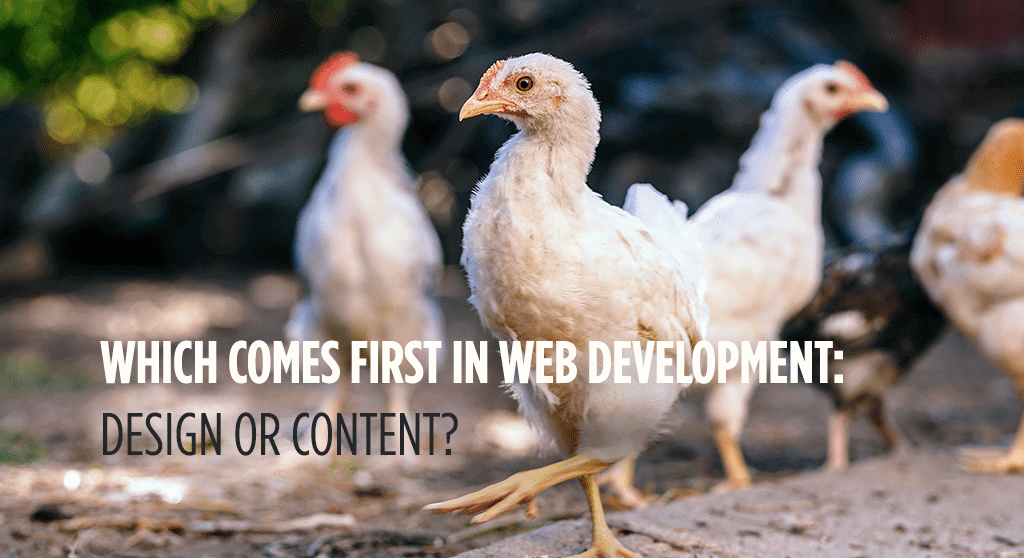Who’s in charge of your visitor path? Your designer, or your content creator?
You’re launching a web development project. The end result will be a visually engaging site with thoughtful user path, rigorously designed to promote conversions. The question is: who’s job is it to create that user experience? The designer creating the wireframe, or the marketer planning the content strategy?
I sometimes feel like designers and content marketers live in parallel yet closely related universes. Each of us operate within our spheres of professional expertise, and we mostly don’t collide. However, when the worlds of design and content do come into conflict, the result can get messy.
Every web development project has to balance the artistic vision of the web designer against the customer insight of the content specialist. But finding the appropriate balance can be difficult when both sides have passionate opinions on the subject. The best way to help each side work productively with the other is to focus on the end goal, and make decisions based on the greatest usability. However, it helps if each side understands the intent behind the other side’s thought process.
What does your web designer need to know about content marketing?
Every designer should understand the principles behind the sales funnel and how a content strategy pushes visitors along that path. Content writers also usually spend more time working with the customer, meaning they will know more about their content needs. After all, once the designer finishes their work, it will be up to the content marketer to supply the ongoing marketing needs of the client.
The designer should also be aware of any customer research or usability data that the content marketer has used to inform the strategy plan on the site. If the designer is operating according to the conventional wisdom of ten years ago, it’s likely they won’t know why a content marketer is insisting on a certain design change.
Call-to-action buttons, or instance: many designers prefer to make them as elegant and unobtrusive as possible, thus the ghost button trend. When a content marketer comes back and says “make the button larger and bright red,” designers are often understandably irritated. After all, design is their field!
However, the problem here isn’t that their design looks bad—it’s that it’s not converting. Marketers live off conversions, as do businesses and the customers they serve. Traffic signs aren’t designed to be beautiful; they’re designed to be noticeable. Their purpose is to communicate information in the most legible way possible, under the broadest variety of circumstances. Web design is often the same way. It can be beautiful, but only if it functions.
What does your content marketer need to know about design?
Content marketers base a lot of their strategy on the expected features and functionality of a website. Because of this, the content team can easily fall into trouble if they expect their design and development coworkers to execute their vision, only to discover in the eleventh hour that their idea won’t work.
Content writers should also be aware of any design constraints that might impact their copy requirements. Does this website require a short summary of each service to go on one page? Or will each service get its own, dedicated page with a full write-up? Are we introducing a product on the home page, or creating a separate landing page for it? A mistake in this area is usually easy enough to correct. However, it can waste time and budget if the designer and content writer aren’t communicating.
We already mentioned usability principles as a key knowledge area for designers. But the truth is that designers can often be ahead of content marketers in their knowledge of usability. While content marketers spend plenty of time analyzing the conversion rate on their marketing campaigns and pouring over search engine rankings to see how well their content strategy is paying off, designers are following their own usability tests to see how visitors interact with their site.
But for a site to achieve the best results for the client, both teams must understand of how usability affects each other’s work. If the content writer decides starts suggesting creative navigation menu titles, delivers overly-burdensome copy, or (shudder) proposes a homepage carousel for the purpose of cramming in more, unfocused content… it’s time they brushed up on some usability research.
Whose vision comes first?
In practical terms, it’s usually easiest for the designer to create wireframes and for the content writer to fit copy into the space accordingly. However, it would be a mistake to infer from this that the designer’s vision is more important than the content marketer’s strategy. Quite the contrary. Design that does not support the strategy behind the site should be sacrificed for the sake of usability and a better conversion rate. (If designers don’t like to hear that, they can take comfort in knowing that good design often leads to good usability.)
That said, the best designs are a collaboration. Your design and content creator need to work together to meet the strategic needs of the business. You should rely on your content expert to make sure the featured areas guide users along the marketing funnel. Your designer should know how to execute this plan in a way that follows clear usability principles. Both these people must be putting the strategic needs of the business/website and the usability needs of the customer foremost.
The way your design team executes this ideal will depend on the experience and capabilities of those involved. If your designer already understands the content strategy, they may be able to create their first wireframe before sending it to the content strategist. Or, you may want to have your strategist sketch out a user path for the designer to reference before they begin the wireframe.
Nothing about web development should set the designer and the content marketer against each other. So long as both parties focus on delivering a compelling and functional end product, everyone wins.

